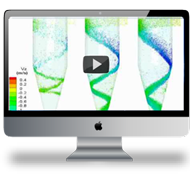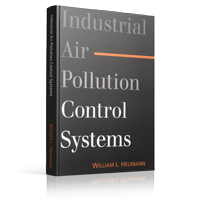Scrubber Troubleshooting Guide
- Home
- Scrubber Troubleshooting Guide
Scrubber Troubleshooting Guide
Particulate Scrubber Symptoms:
Design basis is wrong
SOLUTION
- Check vendor calculations and design data
- Increase scrubber pressure drop and/or liquid rate
Scrubber is not running at design pressure drop or water rate
SOLUTION
- Adjust system operations and settings
- Repair or replace recycle pump.
- If possible, visbly inspect water spray pattern while scrubber is not operating
Water is not distributed fully across venturi
SOLUTION
- Check water rate and pressure
- Check for and replace plugged or worn nozzles
Liquid entrainment carry-over
SOLUTION
- (see below)
Drain line(s) are not sealed
SOLUTION
- trap or submerge liquid drain lines
Axial velocity is too high for separator
SOLUTION
- Check design basis and actual flow rate
- if too high, reduce flow or replace separator with larger size
- Add secondary entrainment separation
Separator is flooded
SOLUTION
- Clear plugged drain
Internal build-up
SOLUTION
- Clean internal surfaces of separator
Holes or leakage into separator
SOLUTION
- Repair holes
Solids concentration is too high in recirculation liquid
SOLUTION
- Increase recycle bleed-off
- Increase fresh water make-up
- Change liquid injection system
Wrong material of construction
SOLUTION
- Determine corrosive constituants.
- Repair and add lining or coating that is resistant to corrosion and is abrasion resistant enough for process
- Add PH control to neutralize corrosive constituants
Failure of PH control system
SOLUTION
- Check PH sensor and control
- Check caustic level
- Check caustic metering pump
Abrasive solids
SOLUTION
- Reduce venturi velocity if possible while still meeting emission standards
- Increase water rate while maintaining or decreasing scrubber pressure drop
- Add abrasion resistant lining
- Rebuild worn parts out of more abrasion resistant material
Combined effects of abrasion accelerated by corrosion
SOLUTION
- see “Corrosion” above
Gaseous Scrubber Symptoms:
Design basis is wrong
SOLUTION
- Check vendor calculations and design data
- Increase packing height , liquid rate, and/or adjust chemistry
Scrubbing liquid rate is too low
SOLUTION
- Adjust system operations and settings
- Repair or replace recycle pump.
Water is not distributed fully across packing
SOLUTION
- Check water rate and pressure
- Check for and replace plugged or worn nozzles
- If possible, visbly inspect water spray pattern while scrubber is not operating
- Check distribution tray if used instead of spray nozzle
Liquid entrainment carry-over
SOLUTION
- (see below)
Packing is Flooded
SOLUTION
- Gas or liquid flow rate is too high for packing
Packing is plugged w/solids
SOLUTION
- Add precleaner to remove solids
- Check chemistry to ensure salts or precipitates are not forming
- Ensure adequate liquid flow rate and distribution to packing
Drain line(s) are not sealed
SOLUTION
- trap or submerge liquid drain lines
Axial velocity is too high for separator
SOLUTION
- Check design basis and actual flow rate
- if too high, reduce flow or replace separator with larger size
- Add secondary entrainment separation
Separator is flooded
SOLUTION
- Clear plugged drain
Internal build-up
SOLUTION
- Clean internal surfaces of separator
Holes or leakage into separator
SOLUTION
- Repair holes
Wrong material of construction
SOLUTION
- Determine corrosive constituants.
- Repair and add lining or coating that is resistant to corrosion and is abrasion resistant enough for process
- Add PH control to neutralize corrosive constituants
Failure of PH control system
SOLUTION
- Check PH sensor and control
- Check caustic level
- Check caustic metering pump

